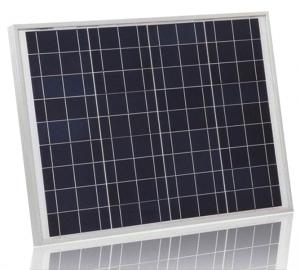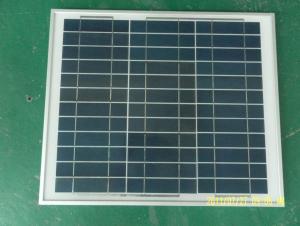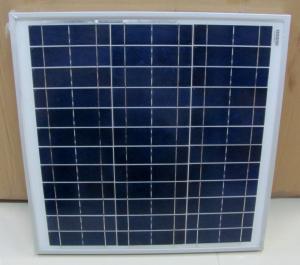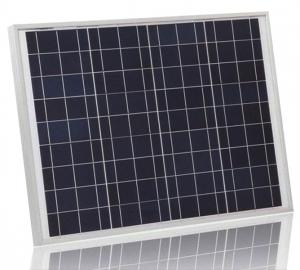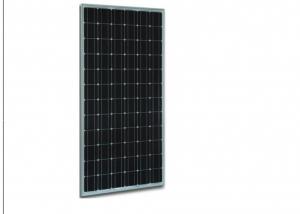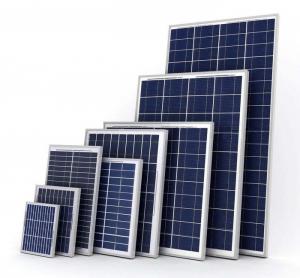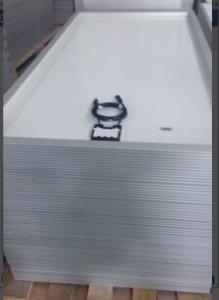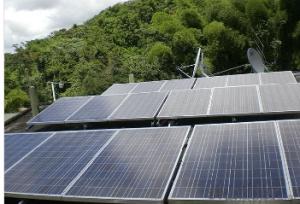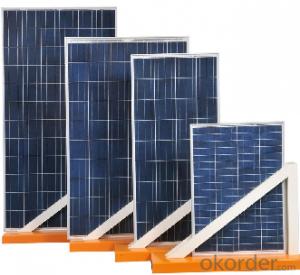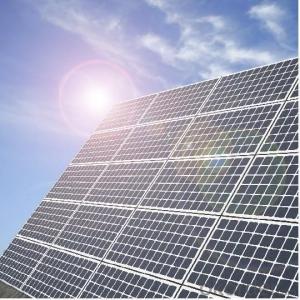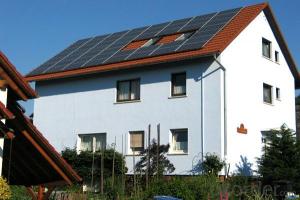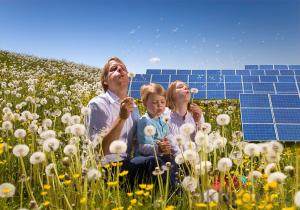400 Watt Solar Polycrystalline Panels (25w-35w)
- Loading Port:
- Shanghai
- Payment Terms:
- TT
- Min Order Qty:
- 1 watt
- Supply Capability:
- 100000/month watt/month
OKorder Service Pledge
OKorder Financial Service
You Might Also Like
Solar Polycrystalline Panels (25W-35W)
Introduction of Solar Polycrystalline Panels (25W-35W)
Solar polycrystalline panels is designed for large electrical power requirements. It is the optimal choice for both on-grid and off-grid power systems. CNBM Solar panel offers high performance of power per square foot of solar array.Poly- or multicrystalline silicon(poly-Si or mc-Si): made from cast square ingots — large blocks of molten silicon carefully cooled and solidified. Poly-Si cells are less expensive to produce than single crystal silicon cells, but are less efficient. US DOE data shows that there were a higher number of multicrystalline sales than monocrystalline silicon sales.
Characteristics of Solar Polycrystalline Panels (25W-35W)
I Solar Cell : High efficiency crystalline solar cell. Even if under the weak light, the solar module can produce maximum power output.
II Tempered glass (toughened glass): Anti-reflecting coating and high transmission rate glass increase the power output and mechanical strength of solar module.
III EVA and TPT: Using high quality EVA and TPT to prevent destroying and water.
IV AI frame: Without screw, corner connection. 6 holes on the frame can be installed easily.
V Junction box: Multi function junction box with water proof.
VI Long lifetime: ≥25 years; Less power decrease.
VII Good performance of preventing from atrocious weather such as wind and hails.
VIII Resisting moisture and etching effectively, not effected by geology. .
Standard Test Conditions of Solar Polycrystalline Panels (25W-35W)
The opto-electrical specifications shown below are stabilized values being measured at Standard Test Conditions of multicrystalline silicon Solar Panel, Irradiance: 1000W/m2, Spectrum: AM1.5 at 25°C, The info below is subject to manufacturing tolerances. Where appropriate minutes of measurement are available and are used for the dimensioning of the installation.
Advantages of Solar Polycrystalline Panels (25W-35W)
• CNBM Solar performance guarantees for 25 years
• 2 years guarantee for workmanship for multicrystalline silicon Solar Panel
• Timeliness of delivery
CNBM International Corporation's products including Monocrystalline Solar Panel, Polycrystalline Solar Panel ( multicrystalline silicon Solar Panel) have received and enjoyed famous reputation in many countries and regions in the world .As a solar panel manufacturer in China, we strive to provide our customers with excellent service, superior products and unmatched value.
Characteristics of Solar Polycrystalline Panels (25W-35W)
Max Power Voltage Vmp (V) | 18.4V | 18.4V | 18.0V |
Max Power Current Imp (A) | 1.36A | 1.63A | 1.94A |
Open Circuit Voltage Voc (V) | 23.0V | 23.0V | 22.6V |
Short Circuit Current Isc (A) | 1.46A | 1.74A | 2.08A |
Max Power Pm (W) | 25W | 30W | 35W |
Temperature Coefficient of Cells
NOCT | 47℃±2℃ |
Temperature Coefficients of Isc (%/℃) | 0.064 |
Temperature Coefficients of Voc (%/℃) | -0.33 |
Temperature Coefficients of Pmp (%/℃) | -0.45 |
The dimension of the modules can be changed according to the demand of clients
Limits
Operating Temperature | –40 °C to +85°C |
Storage Temperature | –40 °C to +85°C |
Max System Voltage | 700V |
Guarantee of Solar Polycrystalline Panels (25W-35W)
Products Guarantee | 2 yrs free from defects in materials and workmanship |
Performance Guarantee | No less than 90% within 10yrs and no less than 80% within 20yrs |
Certificates | IEC, ISO, TUV, CE |
The Equipment of Solar Polycrystalline Panels (25W-35W)
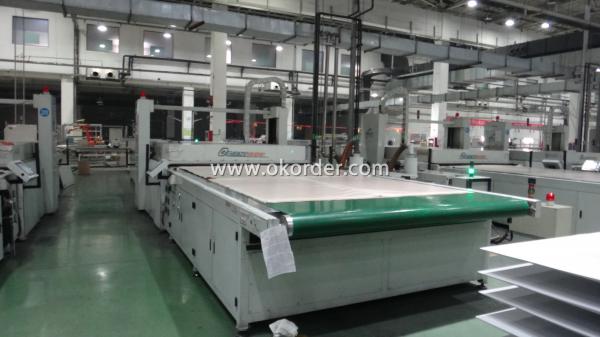
The usage of Solar Polycrystalline Panels
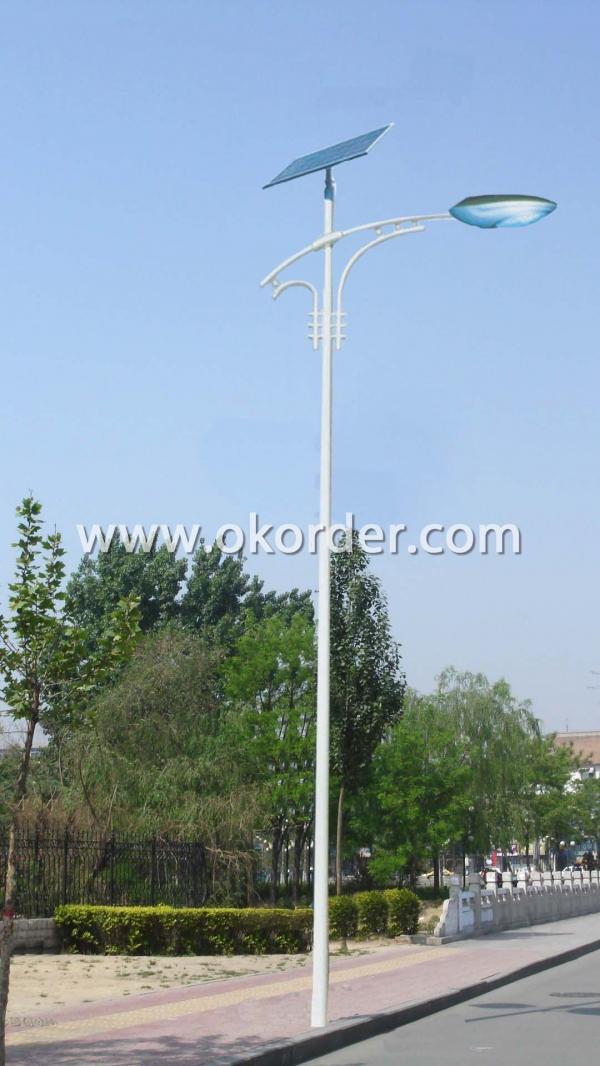
- Q: I read on CNN's website last year some company was creating a very cheap type of solar panel, that needs minimal maintenance and and has minimal glare from the sun. And the creator of the project said he one day wanted to cover every rooftop in the US with these solar panels. Seems like a good idea to me but I havent heared anything of it for a long time and I don't know what they are called... any help?
- The cheapest will be solar paint where you lay down some wires and paint the panel on. Solar roof tiles are also coming along but each tile has to be wired in. Currently the target is $ a watt. The efficiencies of these panels are very low but if the cost is low enough then the efficiencies won't matter. Keep in mind that even fossil fuel is solar power, just solar power captured by photosynthesis millions of years ago, and photosynthesis has a maximum theoretical efficiency of 6.6% with most plants achieving less than % efficiency so even an inefficient solar paint already outstrips our current energy sources in terms of efficiencies. The real problem is the business model. With solar energy you can sell the panels upfront but then what do you do for an income whereas with fossil fuels, you sell every kwh and bill each month.
- Q: My mom's house has some solar power panels on the top of her house but they are not connected to anything. They don't even have wires or anything like that. Does anyone know how to connect and make solar panels work? Thank You
- FIrst get an electrician...lol shouldnt cost too much if all the hardware is there , but depending on how many panels there are and what can... would tell you if the energy output would be worth the effort. plus one reason they could be unplugged is because they are bad . But you can repanel a new house with moderate power for about 3-5 grand
- Q: What is the average cost of solar panel installation?
- The average cost of solar panel installation can vary depending on several factors such as the size and type of the system, location, and any additional equipment or services required. However, as of 2021, the average cost for a residential solar panel installation in the United States ranges from $10,000 to $30,000, including equipment, labor, and permitting costs. It is always recommended to obtain multiple quotes from reputable solar installation companies to get a more accurate estimate based on your specific needs and circumstances.
- Q: Do solar panels float?
- I've had people banging on my door to install them unfortunately i can't test the theory The offer came between the government sign-up of insulation where the ensuing deaths of several installers halted the program and the Queensland floods - not a floating panel in sight!
- Q: Can solar panels be used to heat water?
- Yes, solar panels can be used to heat water. Solar thermal systems, also known as solar water heaters, use sunlight to heat water and are more efficient at heating water compared to using solar panels for electricity generation. These systems capture the sun's energy and transfer it to a fluid, which then heats the water for various applications such as domestic use, swimming pools, and commercial purposes.
- Q: I live in Los Angeles area, I see the ads that, they will install solar panel for $0. I would like to know what is the catch ?Thanks You.
- Read the terms and conditions! They will own the panel and receive payment for any power generated from it, as one example.
- Q: I am looking to wire in some solar panels into my home. I already have plenty of wiring, and some solar panels around. I just need to know what I need to do to wire them into my home so I can lower my electric bill. This past month it was six hundred dollars.Can someone direct me to some information, or tell me how without telling me to hire some guy to come out to charge me thirty thousand dollars to install two or three thousand dollars worth of equipment?
- The essentials are to connect the panels in a configuration that matches the inverter. My system has twenty 24 volt panels in series, to an inverter that wants to see 480. They could have been in any series-parallel configuration to match an inverter that used different voltage. I chose the high voltage route to reduce IR losses in the connections. The proper inverter is essential on grid connected systems. It must be able to disconnect from the grid if grid power fails, and to come back on line automatically, and in phase. There has to be a fused disconnect between the panels and the inverter. When connecting to the grid, another fused disconnect is required. My power company was very specific about acceptable switches. Just using a good brand doesn't hack it. Lots of good info on solar panels in the green search box above on this page.
- Q: I bought a pack of OEM mini solar panels that produce 4.2v and 22mA and I was just wondering how many LED's I could hook up to one mini solar panel? I currently have one green LED with a resistor on the one panel but was wondering how many I could possibly run off of one panel?
- Typically LED's run off low voltage and 20mA or so of power (it depends what kind of led you have). That being said if one of your solar panels only provides 22mA of power then your circuit would have to be a series circuit for you to connect more than one. In a series circuit the current supplied of 22mA will go through each LED whereas a parallel circuit the current would be divided for each subsequential led. So in your case i can see you getting away with 3 or so led's before the voltage drop across each led will cause the voltage to be insufficient enough to drive anymore. Keep in mind the LED's will turn on but the first one will be bright then next one not as bright and so on. If you opted out and bought a solar panel with 200mA and 4V you could wire the led's in parallel and get 0 led's to turn on with the same brightness or intensity. Hoped that helped!
- Q: Can solar panels be installed on oil or gas facilities?
- Yes, solar panels can be installed on oil or gas facilities. This is known as hybrid energy systems, where solar panels are integrated with traditional fossil fuel facilities to generate electricity. This combination allows for the diversification of energy sources, reducing reliance on traditional fuels and minimizing carbon emissions. Additionally, solar panels can help offset the energy consumption of oil or gas facilities, making them more sustainable and environmentally friendly.
- Q: Can solar panels be used for powering agricultural irrigation systems?
- Yes, solar panels can be used to power agricultural irrigation systems. Solar-powered irrigation systems are increasingly being used in agriculture as they provide a sustainable and cost-effective solution. Solar panels convert sunlight into electricity, which can then be used to power pumps and other irrigation equipment, reducing reliance on fossil fuels and electricity grids. This approach helps farmers save on energy costs and reduces their carbon footprint.
Send your message to us
400 Watt Solar Polycrystalline Panels (25w-35w)
- Loading Port:
- Shanghai
- Payment Terms:
- TT
- Min Order Qty:
- 1 watt
- Supply Capability:
- 100000/month watt/month
OKorder Service Pledge
OKorder Financial Service
Similar products
Hot products
Hot Searches
Related keywords
